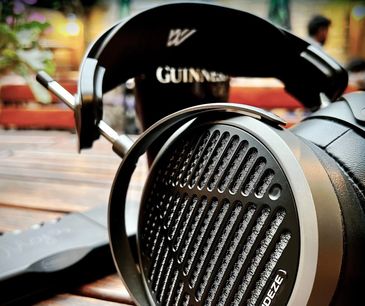Signed in as:
filler@godaddy.com
Signed in as:
filler@godaddy.com


Headphones grew out of the need to free up a person's hands when operating a telephone. There were several iterative products that were predecessors to the "hands-free" headphones. By the 1890's the first device that is unmistakably a headphone was made by a British company called Electrophone, which created a system allowing their customers to connect into live feeds of performances at theaters and opera houses across London. Subscribers to the service could listen to the performance through a pair of massive earphones that connected below the chin, held by a long rod.
French engineer Ernest Mercadier patented a set of in-ear headphones in 1891, Mercadier was awarded U.S. Patent No. 454,138 for “improvements in telephone-receivers…which shall be light enough to be carried while in use on the head of the operator.”
Around 1919, some very sensitive headphones were commonly used for early radio work. In 1958, John C. Koss, an audiophile and jazz musician from Milwaukee, produced the first stereo headphones.
Previously, headphones were used only by the US navy, telephone and radio operators, and individuals in similar industries.
Smaller earbud type earpieces, which plugged into the user's ear canal, were first developed for hearing aids. They became widely used with transistor radios, which commercially appeared in 1954 with the introduction of the Regency TR-1. The most popular audio device in history, the transistor radio changed listening habits, allowing people to listen to radio anywhere.
The 3.5 mm radio and phone connector, which is the most commonly used in portable application today, has been used at least since the Sony EFM-117J transistor radio, which was released in 1964. Its popularity was reinforced with its use on the Walkman portable tape player in 1979.

Headphones may be used with stationary CD and DVD players, home theater, personal computers, or portable devices as long as these devices are equipped with a headphone jack.
In the professional audio sector, headphones are used in live situations by disc jockeys with a DJ mixer, and sound engineers for monitoring signal sources. In radio studios, DJ's use a pair of headphones when talking to the microphone while the speakers are turned off to eliminate acoustic feedback while monitoring their own voice. In studio recordings, musicians and singers use headphones to play or sing along to a backing track or band. In military applications, audio signals of many varieties are monitored using headphones. Wired headphones are attached to an audio source by a cable. The most common connectors are 6.35 mm (¼″) and 3.5 mm phone connectors. Adapters are available for converting between 6.35 mm and 3.5 mm devices.

The differences between the type of ear-cups:
Open-back
Open-back headphones have the back of the ear-cups open. This leaks more sound out of the headphone and also lets more ambient sounds into the headphone, but gives a more natural or speaker-like sound, due to including sounds from the environment.
Closed-back
Closed-back (or sealed) styles have the back of the ear-cups closed. They usually block some of the ambient noise. Closed-back headphones usually can produce stronger low frequencies (bass) than open-back headphones.





































This website uses cookies. By continuing to use this site, you accept our use of cookies.